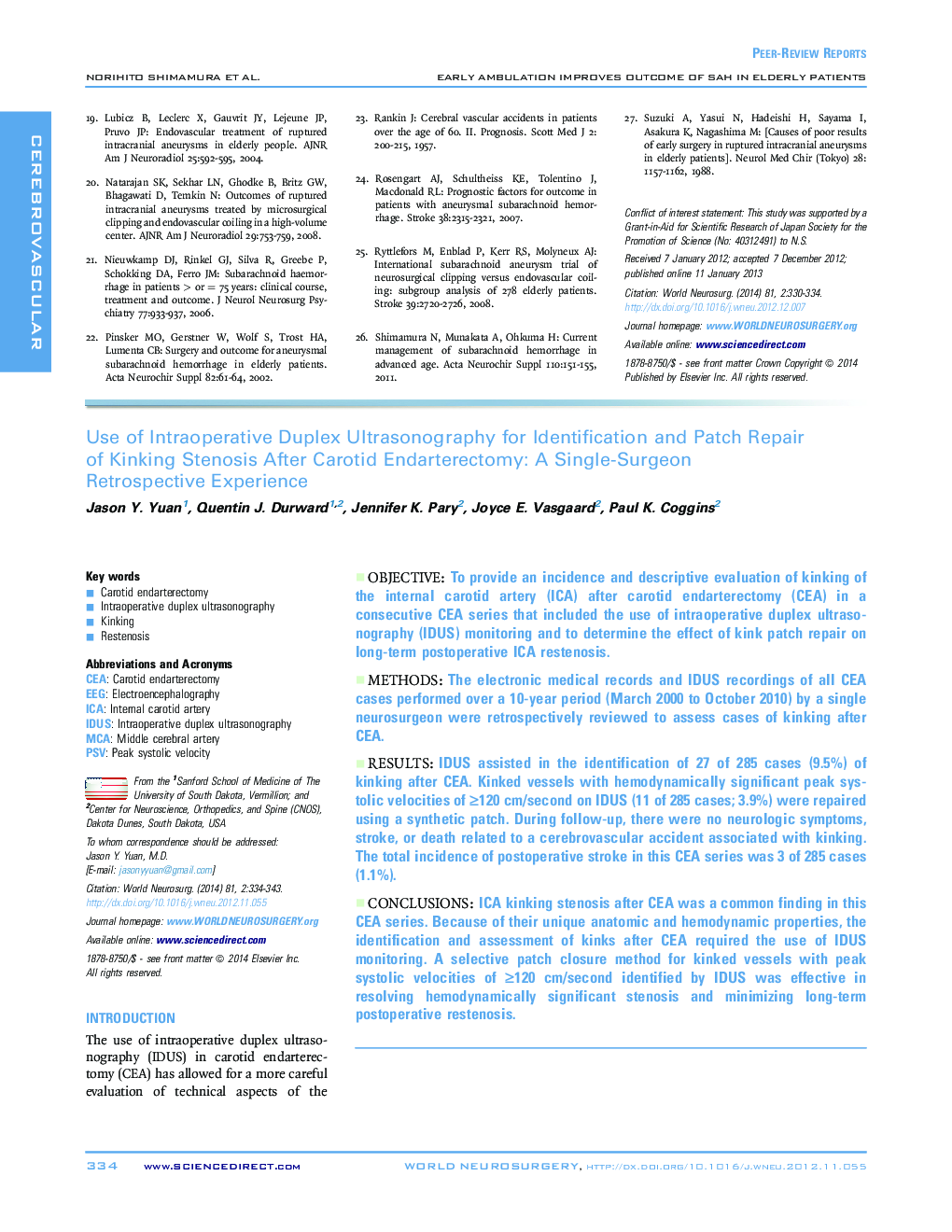| Article ID | Journal | Published Year | Pages | File Type |
|---|---|---|---|---|
| 3095725 | World Neurosurgery | 2014 | 10 Pages |
ObjectiveTo provide an incidence and descriptive evaluation of kinking of the internal carotid artery (ICA) after carotid endarterectomy (CEA) in a consecutive CEA series that included the use of intraoperative duplex ultrasonography (IDUS) monitoring and to determine the effect of kink patch repair on long-term postoperative ICA restenosis.MethodsThe electronic medical records and IDUS recordings of all CEA cases performed over a 10-year period (March 2000 to October 2010) by a single neurosurgeon were retrospectively reviewed to assess cases of kinking after CEA.ResultsIDUS assisted in the identification of 27 of 285 cases (9.5%) of kinking after CEA. Kinked vessels with hemodynamically significant peak systolic velocities of ≥120 cm/second on IDUS (11 of 285 cases; 3.9%) were repaired using a synthetic patch. During follow-up, there were no neurologic symptoms, stroke, or death related to a cerebrovascular accident associated with kinking. The total incidence of postoperative stroke in this CEA series was 3 of 285 cases (1.1%).ConclusionsICA kinking stenosis after CEA was a common finding in this CEA series. Because of their unique anatomic and hemodynamic properties, the identification and assessment of kinks after CEA required the use of IDUS monitoring. A selective patch closure method for kinked vessels with peak systolic velocities of ≥120 cm/second identified by IDUS was effective in resolving hemodynamically significant stenosis and minimizing long-term postoperative restenosis.
